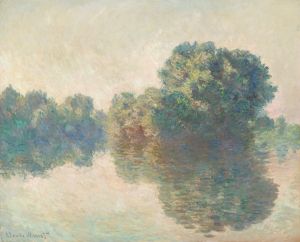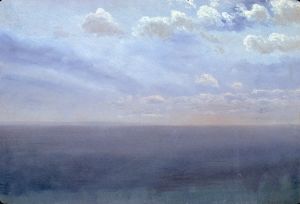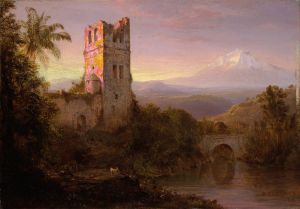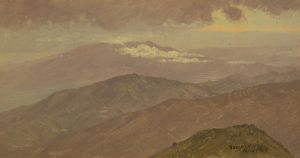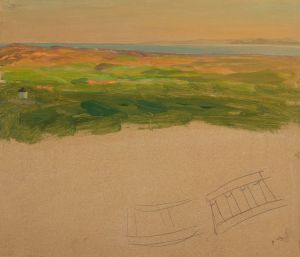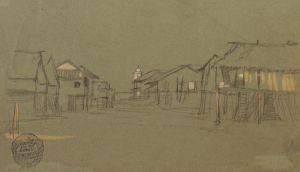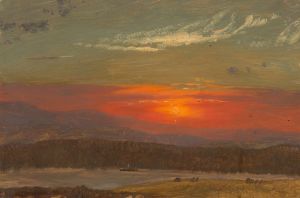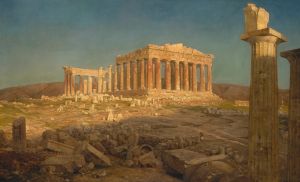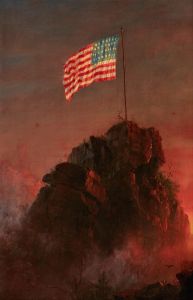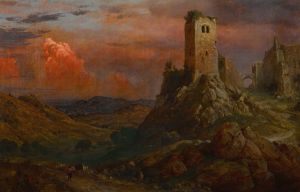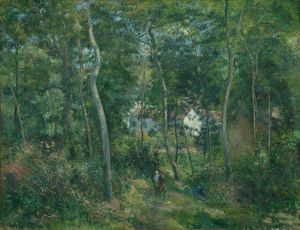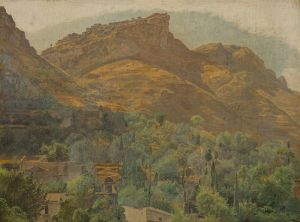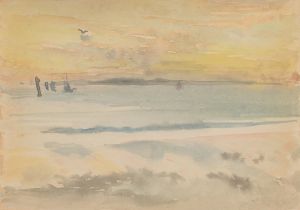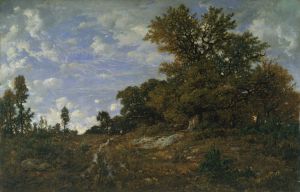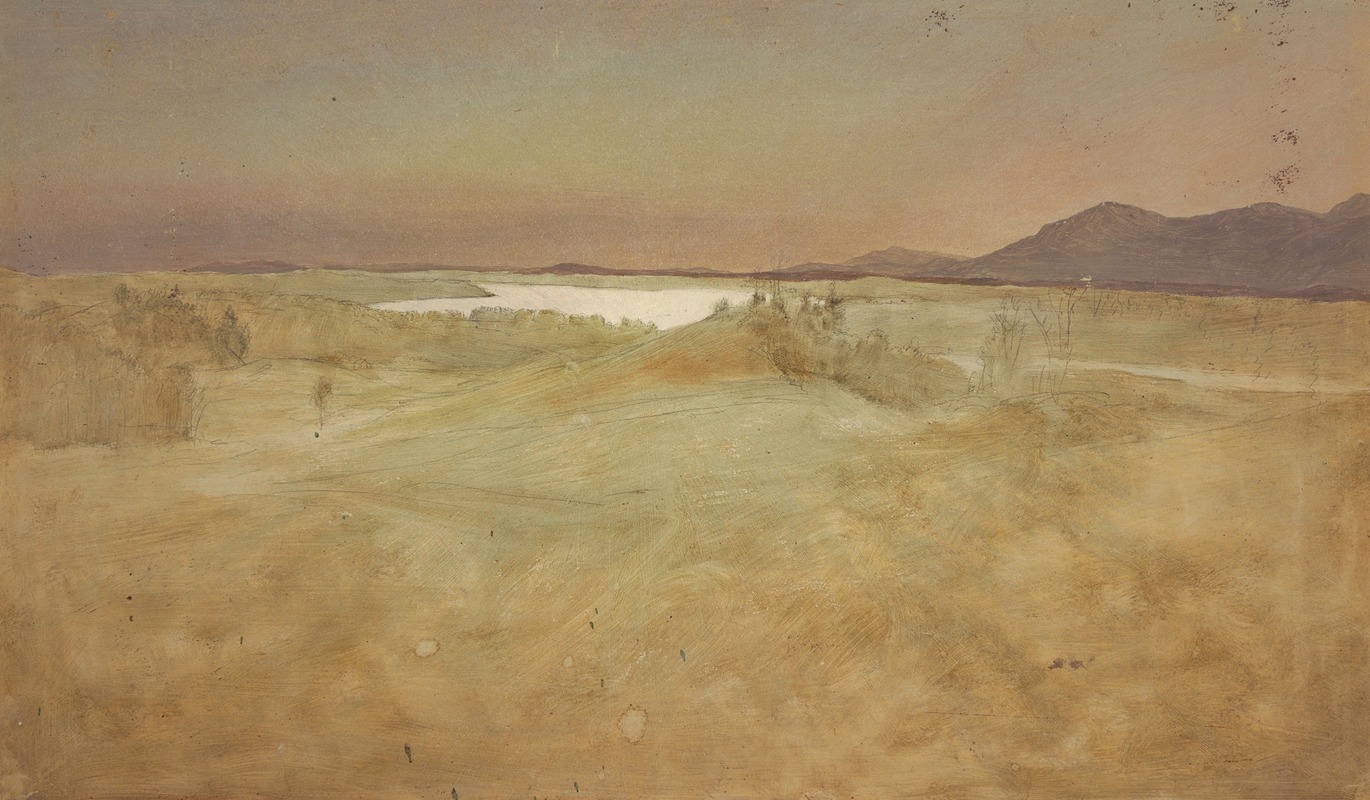
Looking from Olana, Southwest Across Hudson Valley
A hand-painted replica of Frederic Edwin Church’s masterpiece Looking from Olana, Southwest Across Hudson Valley, meticulously crafted by professional artists to capture the true essence of the original. Each piece is created with museum-quality canvas and rare mineral pigments, carefully painted by experienced artists with delicate brushstrokes and rich, layered colors to perfectly recreate the texture of the original artwork. Unlike machine-printed reproductions, this hand-painted version brings the painting to life, infused with the artist’s emotions and skill in every stroke. Whether for personal collection or home decoration, it instantly elevates the artistic atmosphere of any space.
"Looking from Olana, Southwest Across Hudson Valley" is a painting by the renowned American landscape artist Frederic Edwin Church. Church was a central figure in the Hudson River School, a mid-19th century American art movement known for its romantic portrayal of the American landscape. This particular painting is a testament to Church's mastery in capturing the natural beauty and grandeur of the American wilderness.
Frederic Edwin Church was born in 1826 in Hartford, Connecticut, and showed an early interest in art. He became a pupil of Thomas Cole, the founder of the Hudson River School, and quickly developed his own style characterized by meticulous attention to detail and dramatic use of light and color. Church's works often depicted expansive landscapes, and he was known for his ability to convey the sublime beauty of nature.
"Looking from Olana, Southwest Across Hudson Valley" is one of Church's many works that feature the Hudson Valley, a region that was a significant source of inspiration for him. Olana, Church's home and studio, was located on a hill overlooking the Hudson River, providing him with sweeping views of the valley and the Catskill Mountains. This vantage point allowed Church to capture the changing moods and atmospheric conditions of the landscape, which he translated onto canvas with remarkable skill.
The painting showcases Church's ability to blend realism with a sense of the sublime. The composition is carefully structured to draw the viewer's eye across the valley, emphasizing the vastness and tranquility of the scene. Church's use of light is particularly noteworthy; he often painted during the "golden hour," when the sun's rays cast a warm glow over the landscape, enhancing the colors and creating a sense of depth.
Church's work is characterized by its attention to detail, and "Looking from Olana, Southwest Across Hudson Valley" is no exception. The painting features a rich palette of colors, with lush greens, vibrant blues, and warm earth tones that capture the essence of the Hudson Valley. The meticulous rendering of trees, water, and sky demonstrates Church's dedication to realism and his deep appreciation for the natural world.
This painting, like many of Church's works, reflects the 19th-century American fascination with the natural landscape and the belief in the transcendental power of nature. It also embodies the ideals of the Hudson River School, which sought to convey the beauty and majesty of the American wilderness at a time when the nation was rapidly expanding and industrializing.
"Looking from Olana, Southwest Across Hudson Valley" is housed at the Olana State Historic Site, which preserves Church's home and studio. Olana itself is a work of art, designed by Church in collaboration with architect Calvert Vaux. The site offers visitors a glimpse into Church's life and work, as well as the opportunity to experience the breathtaking views that inspired many of his paintings.
In summary, "Looking from Olana, Southwest Across Hudson Valley" is a quintessential example of Frederic Edwin Church's landscape painting. It captures the serene beauty of the Hudson Valley with precision and artistry, reflecting both Church's technical skill and his deep connection to the natural world. The painting remains an enduring testament to the legacy of the Hudson River School and its celebration of the American landscape.





